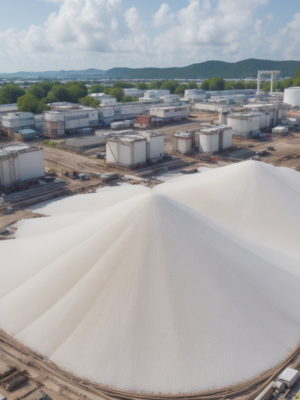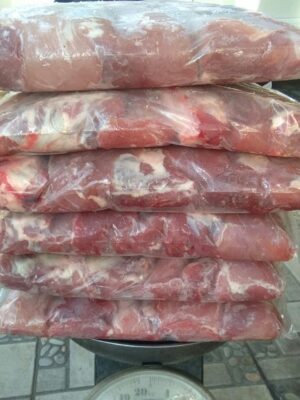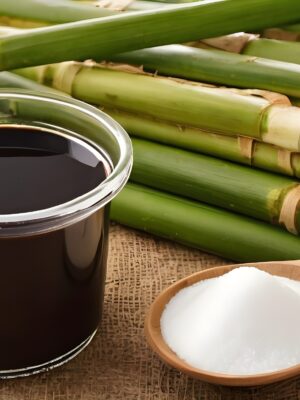What Is The Difference Between ICUMSA 45 And 100?
When you’re standing in the sugar aisle of your local grocery store, you might find yourself puzzled by all the different numbers and labels on sugar packages. You may have noticed bags marked with terms like ICUMSA 45 or ICUMSA 100 and wondered what they really mean.
How do these numbers affect your morning coffee or the cake you’ve been longing to bake? Well, those mysterious numbers actually tell us about the purity and quality of sugar – something every sweet tooth should know!
ICUMSA stands for International Commission for Uniform Methods of Sugar Analysis, which sounds a bit technical, but it’s just a way to grade how pure and white sugar is. Now imagine having this insider knowledge that helps you pick not only the sweetest but also the highest quality sugar for your table and recipes.
Our blog post will guide you through understanding these labels so that next time, choosing between ICUMSA 45 and ICUMSA 100 will be a piece of cake.
Dive into our enlightening comparison as we unravel the mystery behind these sugar codes!
Key Takeaways
- ICUMSA 45 sugar is the purest and whitest type, used for premium quality foods and sweets.
- ICUMSA 100 sugar is less refined, with a bit more color and flavor from molasses, making it cheaper than ICUMSA 45.
- The main differences between these two sugars are purity level, color, price, and how they’re used in cooking and baking.
- Brazil is a big producer of sugarcane, especially the high-quality ICUMSA 45 sugar that’s sent around the world.
Explaining ICUMSA – The International Commission for Uniform Methods of Sugar Analysis
ICUMSA is a group that sets rules for testing sugar quality. They decide how to measure things like color and purity in sugar. This helps people all over the world trade sugar fairly because they use the same tests.
The ICUMSA rating tells you how pure and white sugar is. A lower ICUMSA number means the sugar looks whiter and has less stuff mixed in it. Factories do special cleaning steps to make sure their refined sugars meet these standards.
Scientists and experts work together at ICUMSA to make sure their methods are good ones. They check many times so that sugars from different places can be compared right. This way, everyone knows what kind of sugar they are buying or selling.
ICUMSA 45 – The Premium White Refined Sugar
Venturing into the realm of sugar purity and quality, ICUMSA 45 emerges as a top-tier contender, known for its exceptionally high grade. This pristine white refined sugar not only boasts a sparkling appearance but is also sought after by culinary aficionados and industry giants alike for its consistency and superior quality.
Characteristics and Uses of ICUMSA 45
ICUMSA 45 sugar is really special because it’s super pure and clean. It looks like sparkling white crystals that are safe for people to eat. This kind of sugar is the best you can get, with a purity level of almost 100%.
People use ICUMSA 45 in all kinds of food because it’s so high-quality. From baking cakes to making candies, this sugar makes everything taste great.
It’s very popular around the world, especially in Brazil where a lot of it comes from. Factories choose ICUMSA 45 to make sure their sweets and drinks are the best they can be. You might even find this sugar on your table in little packets or as cubes to sweeten your coffee.
Moving away from ICUMSA 45, let’s take a closer look at its cousin – ICUMSA 100 and see how these two differ from each other.
ICUMSA 100 – The Lower Grade Refined Sugar
Diving into the world of sugar, one finds ICUMSA 100 occupying a unique niche; it’s a less refined variant than its pristine counterpart. This type of sugar retains more of the natural molasses content, offering a distinctive flavor profile and color that sets it apart from the highly sought-after ICUMSA 45.
Characteristics and Uses of ICUMSA 100
ICUMSA 100 sugar is lighter in color than raw sugar but not as white as ICUMSA 45. It looks clean, yet it doesn’t sparkle like the premium grade. People use this type of sugar a lot because it’s good for making food and doesn’t cost too much.
You might find ICUMSA 100 in big bakeries or when someone is mixing drinks that need lots of sugar.
This sugar meets safety standards which means it’s okay to eat, so it’s called food-grade sugar. Companies pick ICUMSA 100 when they want something cheaper than the very white kind and still good enough for their cakes or cookies.
They also mix it into drinks like sweet tea or lemonade where the color isn’t as important as taste.
The Main Differences Between ICUMSA 45 and 100
5. The Main Differences Between ICUMSA 45 and 100: Delving into the distinctions between ICUMSA 45 and 100 reveals a world where the purity, appearance, and application in various sectors sets these two sugar types apart; keep reading to uncover how these differences impact everything from your morning coffee to large-scale food production.
Purity Level
ICUMSA 45 is known as the highest purity level sugar you can get. It’s like the superstar of white sugars, sparkling clean and with almost no other stuff inside it besides pure sweet goodness.
In a sugar world, this one stands out because it goes through a lot of cleaning to get rid of impurities. Think about it as getting the VIP treatment in the sugar refining process.
Now ICUMSA 100 still gets refined but not as much. This means that while it’s still good quality and safe to eat, you’ll find slightly more things that aren’t sugar in there compared to ICUMSA 45.
Farmers and food makers use this type too because even if it isn’t top-notch like ICUMSA 45, it does an excellent job for most sweet tasks.
Next up, let’s talk about how exactly these two types look different just by glancing at them.
Color and Appearance
Sugar comes in many shades, and the color tells us how pure it is. ICUMSA 45 sugar shines like a bright white light. This makes it look clean and top-quality for eating. It goes through lots of steps to take out any bits that don’t belong.
ICUMSA 100 sugar, on the other hand, isn’t as shiny white. It has a bit more color – up to 100 IU in fact. White sugars like these let less light pass through than brown ones do. So they may not sparkle as much, but they’re still good for making yummy things!
Price Point and Accessibility
Moving from the looks of these sugars to their cost and how easy they are to get, ICUMSA 45 and ICUMSA 100 have clear differences. ICUMSA 45 is a premium type that usually has a higher price tag.
This is because it goes through more steps to make it pure. People often use it for special reasons like in nice hotels or expensive foods.
ICUMSA 100, on the other hand, does not cost as much. It’s easier to find all over the world because it still works well but doesn’t need as many steps to clean it up. Factories and bigger places that need lots of sugar might choose this one since they can save money and still get good quality.
The prices for both types change from time to time, so those who sell sugar keep an eye on monthly reports by big groups like the European Union Commission. Knowing these costs helps them decide how much sugar they should buy or sell in different markets around the globe.
Applications in Industry and Commerce
Sugar’s price and how easy it is to get can affect many businesses. ICUMSA 45 sugar, known for being very clean and white, is in high demand. Food companies like this sugar because it makes their products look good and taste sweet.
They use it to make candies, drinks, and baked goods.
ICUMSA 100 sugar has a different look. It’s a bit darker but still used by lots of companies. This type of sugar goes into things that don’t need super white sugar – like some chocolates and cookies.
Both kinds of sugar help farmers who grow sugarcane make money. They sell their crop to mills where the cane turns into sweet crystals we enjoy every day. These sugars travel around the world making treats sweeter everywhere they go!
Global Sugarcane Production: A Comparative Analysis
Sugarcane is a big deal around the world. It makes up about 80% of all sugar made on Earth. Brazil stands out because it grows and sends out more sugarcane than any other place. They make different kinds, including the very pure ICUMSA 45 sugar.
Prices for sugar can be really different from one country to another. This shows that places grow and trade sugarcane in their own ways. Some have lots of cane sugar they make into crystals, cubes or granulated sugars to sell far away, while others might not grow as much or might keep more sugar at home for people there to use.
Conclusion
Sugar comes in different types, and ICUMSA 45 and ICUMSA 100 are two of them. Remember, ICUMSA 45 is like the star player of sugars – it’s very pure and looks super white. It’s perfect for making your cakes and cookies taste great.
On the other hand, ICUMSA 100 isn’t as pure but still does a good job for baking.
When picking sugar, think about what you need it for. If you want your sweets to be top-notch, go for ICUMSA 45. But if you’re okay with something a bit less fancy, ICUMSA 100 might save you some money.
Also, know where your sugar comes from! A lot of times, really nice sugar like ICUMSA 45 comes all the way from Brazil. People who make candy or bake lots use these sugars to make sure everything tastes amazing.
In the end, choosing between these sugars depends on your recipe needs and how much you want to spend. Pick wisely so that your treats will be delicious every time!
FAQs
1. What exactly is ICUMSA?
ICUMSA stands for International Commission for Uniform Methods of Sugar Analysis. It’s a group that makes rules to tell how pure sugar is.
2. How are ICUMSA 45 and 100 different from each other?
ICUMSA 45 sugar is very pure, sparkling white, and looks clean because it has less color and ash content. On the other hand, ICUMSA 100 isn’t as pure as ICUMSA 45; it’s slightly darker and may have a bit more stuff in it that isn’t sugar.
3. Why does Brazil matter when we talk about ICUMSA numbers?
Brazilian sugar is known around the world, and they make both ICUMSA 45 and 100 types of sugar there with great care in their sugar mills.
4. Can you use both types of these sugars in food?
Yes! Both ICUMSA 45 and 100 are food grade sugars, which means you can eat them. They can be put into packets or cubes to use in kitchens or restaurants.
5. How do people check if a type of sugar meets an ICUMSA rating?
Workers at refineries do tests like checking ash content with chemical analysis or looking at conductivity ash to see if the sugar matches up with its expected purity level.
6. Are there any heavy metals like lead or cadmium in these sugars?
The rules set by the International Commission try really hard to keep bad things out like heavy metals so your crystal sugar should be safe.





